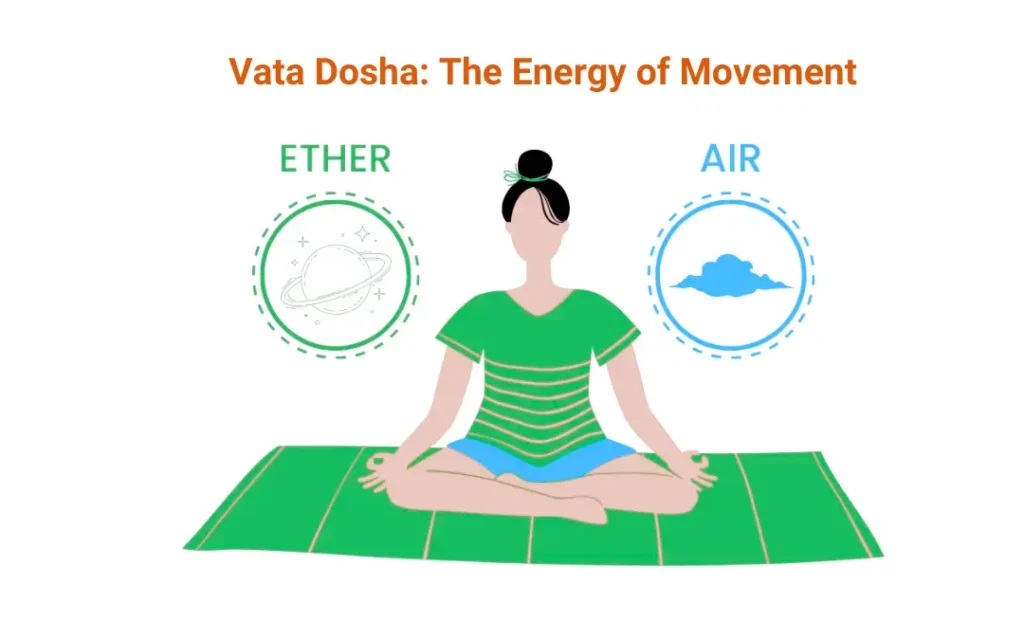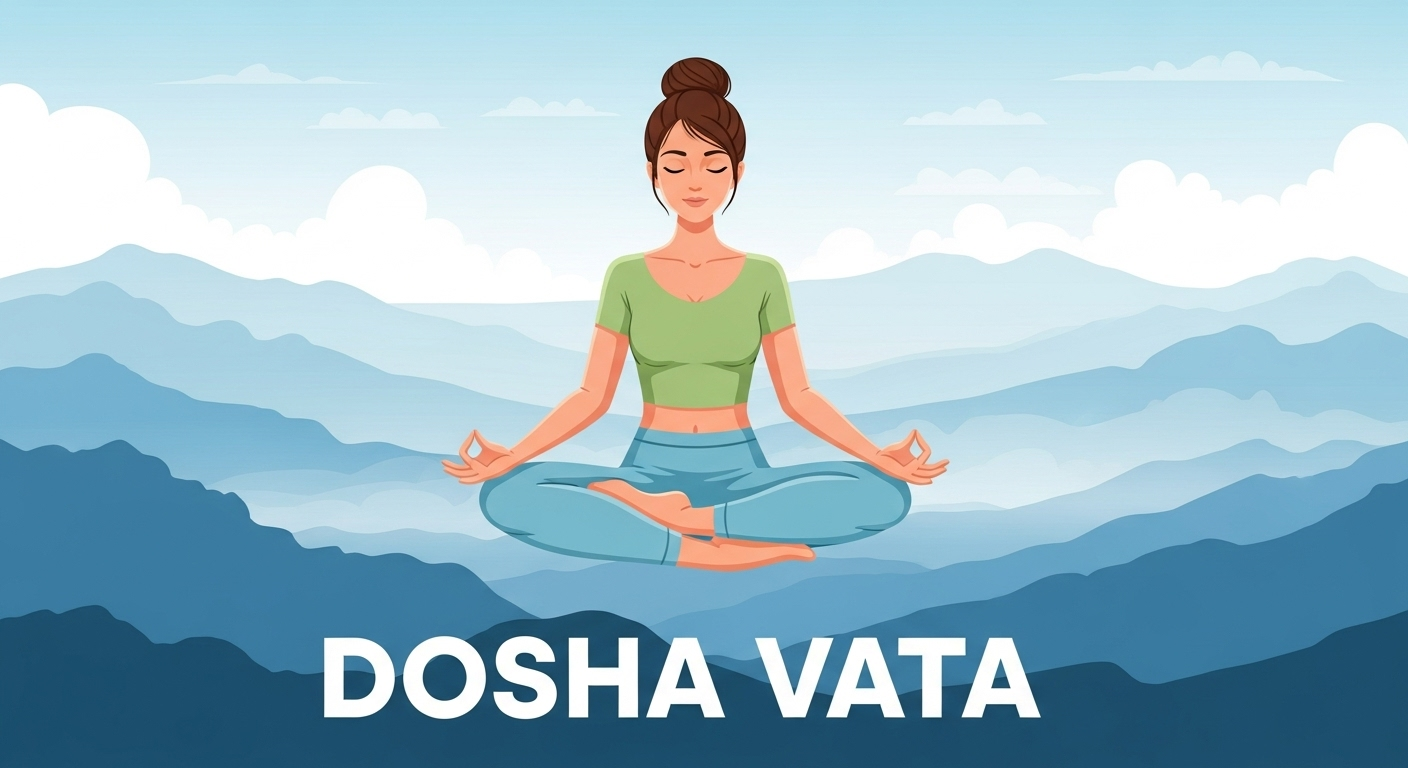Greetings, kindred spirit!
Step outside for a moment and feel the breeze on your skin. Notice how it dances, light and free, carrying the scent of rain or the promise of a new day. That same playful, ever-moving energy is at the very heart of the Vata dosha.
If Vata were a person, they would be the free-spirited artist, the spontaneous traveler, or the dancer who finds rhythm in everything. They live in a world of ideas, a flurry of creativity and boundless curiosity. Their minds are like a flock of birds, beautiful and swift, soaring from one new thought to the next. The essence of Vata is captured in a graceful, extended pose as if dancing with the wind.
This is the beauty of the Vata constitution: a natural lightness, a vibrant imagination, and an infectious enthusiasm for life. They are the dreamers and the innovators, the ones who see the world in a thousand different colors and aren’t afraid to explore them all. Vata types are often quick to learn but also quick to forget, and they thrive on constant new stimulation. Their energy levels can be high, but they can also crash just as quickly, much like a sudden gust of wind.

When the Wind Becomes a Storm
But even the most beautiful wind can become a storm. When Vata falls out of harmony, that graceful dance can become a frantic, anxious flutter. The thoughts that once soared now race uncontrollably, like leaves caught in a whirlwind. That natural lightness can feel like being ungrounded, and the mind, once a creative playground, becomes a battlefield of worry and overthinking.
This imbalance often manifests in both the mind and the body.
On a physical level, an aggravated Vata can make you feel cold more easily, especially in your hands and feet. Your skin might feel dry and rough, and your hair could become brittle. The digestive system, which Vata governs, can become irregular, leading to symptoms like gas, bloating, and constipation. Your sleep might also suffer, becoming light and disturbed. The constant movement of Vata can even cause joint stiffness or an increase in minor aches and pains.
On an emotional and mental level, a Vata imbalance can feel like living on the edge of a storm. You might experience heightened anxiety, worry, or nervousness. Decision-making becomes difficult, and you might feel scattered or unable to focus on a single task. The natural enthusiasm can turn into fear, and your creativity might feel blocked or inhibited. You might also find yourself prone to feeling lonely or isolated.
Finding Your Anchor
Recognizing your Vata story isn’t about giving yourself a label. It’s about finding the narrative that helps you understand yourself better. It’s about listening to the whispers of your body and mind, and learning to bring them back to a state of gentle, peaceful motion.
If you find yourself relating to these signs, don’t worry. This is simply your body giving you a nudge, a gentle reminder to tend to your inner landscape. The first step toward balance is awareness.
In our next blog post, we’ll explore simple, beautiful rituals and practices that act as your anchor, helping you to find stillness amidst the winds of life. We’ll discover how to nourish your inner artist, calm the fluttering mind, and ground your spirit in the quiet strength of the earth.
Until then, try this one simple practice: find a moment to sit quietly, place your hands on your belly, and take a few slow, deep breaths. Feel the expansion and contraction, and anchor your awareness to the rhythm of your own breath.
With warmth,
Your Guide to Ayurvedic Wellness


